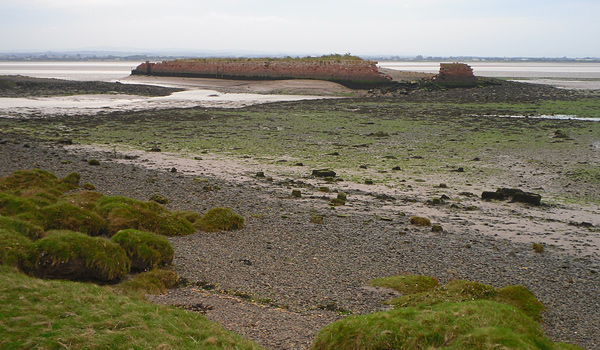Port Carlisle is a superb place to spend a few hours birding, but of course a knowledge of the tides is crucial to get the best from a visit here. At high tide the harbour wall is a safe roost for waders which gather on the far side, unfortunately out of view. As the tide recedes, the waders leave their roost and began to feed on the first of the exposed mud. A good place to watch from is the ‘small wall’, midway between the harbour and the caravan park layby to the south-east, as it is often the first place that waders go to feed as the tide recedes. I have found Broad-billed Sandpiper, Pectoral Sandpiper, Pacific Golden Plover, American Golden Plover and Semipalmated Sandpiper all from here.

Pacific Golden Plover, Semipalmated Sand, Broad-billed Sand, and Pec Sand have all graced this shore
A variety of wader species can be seen including Turnstone, Ringed Plover, Dunlin, Redshank, Black-tailed Godwit, Bar-tailed Godwit, Knot, Sanderling, Lapwing, Golden Plover, Whimbrel, Curlew, Oystercatcher, Snipe and Common Sandpiper. Little Stint, Curlew Sandpiper, Spotted Redshank, Greenshank, and Ruff are all just about annual in varying numbers. Little Gull and Mediterranean Gull are occasionally found amongst the gulls. Peregrines are regular visitors, with an occasional Osprey putting in a brief appearance on passage. As well as the odd raptor, human disturbance can be a problem here, microlight aircraft are a real nuisance as they fly low over the estuary, flushing everything in sight, and it is a popular area for fishing and dog walkers.
Common Terns attempt to nest on the old harbour wall and can be seen fishing during the summer months, and one or two wader species also nest. Shelduck occasionally breed, and during late summer Goosander are always present.

The area favoured by the Long-billed Dowitcher which attempted to overwinter in 2009/2010 – and the old mooring bollard in the foreground
During the winter months Barnacle Geese and Pink-footed Geese are seen flying over, sometimes in large numbers. The ‘rock pools’ just west of the harbour are the best place to find over-wintering Greenshank. This area is also favoured by Spotted Redshank, Little Egret, Rock Pipit and occasionally Kingfisher in some winters.
Looking west towards Bowness-on-Solway the shoreline is excellent for Ringed Plover, Dunlin and Redshank. In 2005 a juvenile Long-billed Dowitcher spent two days here.
An amazing occurrence in November 2006 was the appearance of a Red-rumped Swallow, which spent a couple of hours flying over the Bowling Green in the village.
Besides the birding, the village is full of history. It lies on the Hadrian’s Wall Path and during the summer months is very popular with walkers from all over the world. Prior to 1823 Port Carlisle used to be called ‘Fisher’s Cross’, but in that year it was renamed and an 11 mile canal stretching to Carlisle was opened. It is remarkable to think that steamer ships used to take passengers to Liverpool and on to America from Port Carlisle. The canal was relatively short-lived and eventually unprofitable, and by 1854 it had been drained and its course was converted into a railway line. Until 1914 trains consisted of a single carriage pulled by horse, known as the ‘Dandys’, but in that year they were replaced by steam engines. However, Port Carlisle was unable to compete with the popular seaside town of Silloth, with all of its attractions and its deep water port, and the final train ran through the village on 31st May 1932.












